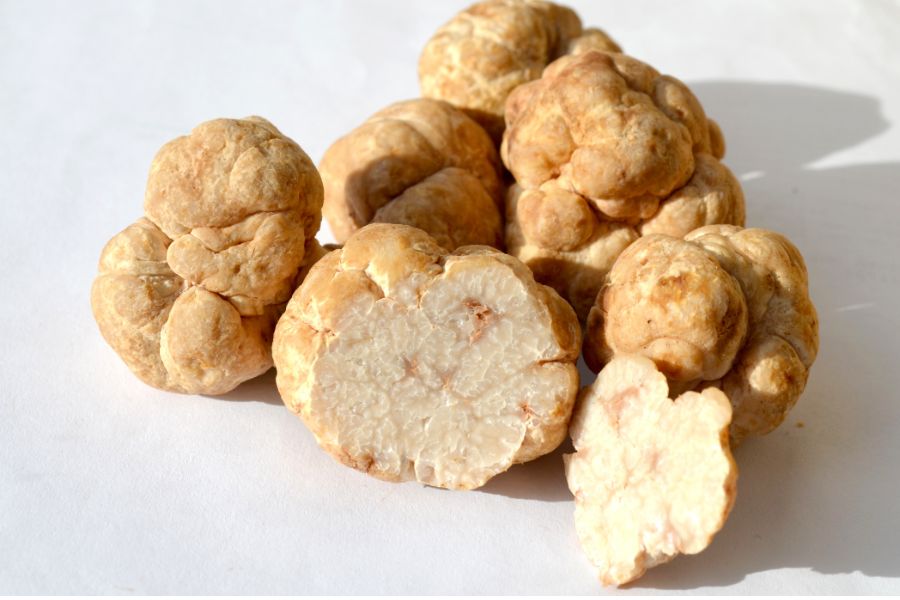Virginia holds some amazing secrets hiding just beneath the forest floor. These buried treasures aren’t gold or silver, but something even more valuable to food lovers everywhere. We’re talking about truffles, those incredibly rare and expensive mushrooms that grow underground near tree roots.
Virginia’s forests are home to several types of these prized fungi. They’ve been growing here for thousands of years, waiting for someone smart enough to look for them.
Finding truffles takes special skills and a lot of patience. You need to know exactly where to look and what signs to watch for. Many truffle hunters use trained dogs or pigs to sniff out these hidden gems because they grow completely underground.
You might walk past a patch of earth hiding thousands of dollars in fungi and never know it. Knowing where to start looking is half the mystery, and the state holds more than a few surprises.
What We Cover In This Article:
- What Wild Truffles Look Like
- Truffle Lookalikes To Avoid
- Best Practices For Finding Truffles
- Where You Can Find Truffles Around The State
- Other Great Locations For Truffles
- When The Best Time Of The Year Is To Find Truffles
- The extensive local experience and understanding of our team
- Input from multiple local foragers and foraging groups
- The accessibility of the various locations
- Safety and potential hazards when collecting
- Private and public locations
- A desire to include locations for both experienced foragers and those who are just starting out
Using these weights we think we’ve put together the best list out there for just about any forager to be successful!
A Quick Reminder
Before we get into the specifics about where and how to find these plants and mushrooms, we want to be clear that before ingesting any wild plant or mushroom, it should be identified with 100% certainty as edible by someone qualified and experienced in mushroom and plant identification, such as a professional mycologist or an expert forager. Misidentification can lead to serious illness or death.
All plants and mushrooms have the potential to cause severe adverse reactions in certain individuals, even death. If you are consuming wild foragables, it is crucial to cook them thoroughly and properly and only eat a small portion to test for personal tolerance. Some people may have allergies or sensitivities to specific mushrooms and plants, even if they are considered safe for others.
The information provided in this article is for general informational and educational purposes only. Foraging involves inherent risks.
What Wild Truffles Look Like
The U.S. is home to several native truffle species that grow wild in forests across the country. Each one has its own unique scent, appearance, and preferred habitat. Here are the types of truffles you can find:
Oregon Black Truffles (Leucangium carthusianum)
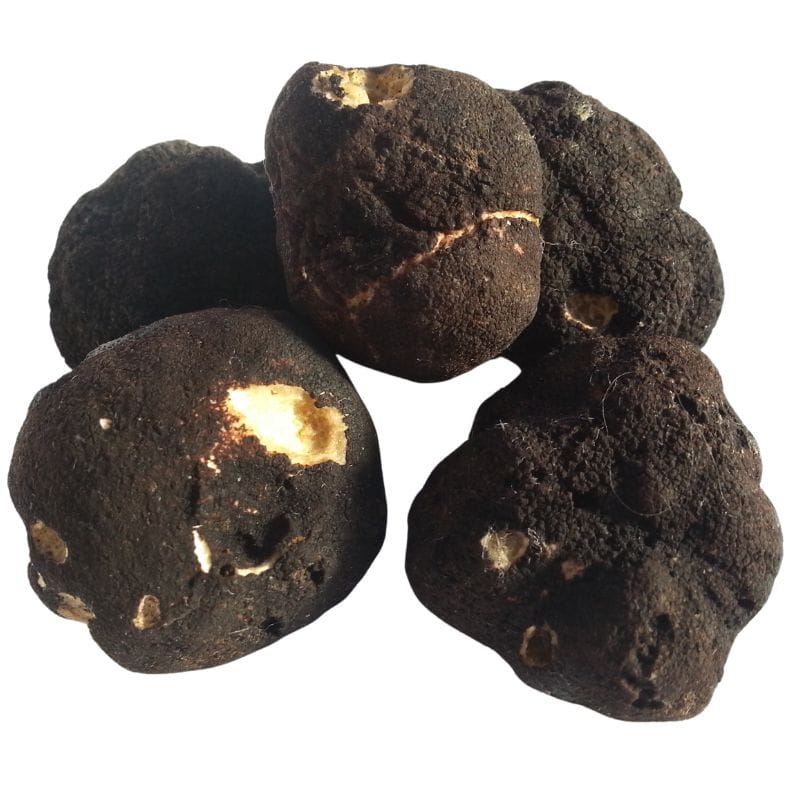
Leucangium carthusianum, also called the Oregon black truffle, grows in the Pacific Northwest and usually shows up around Douglas-fir trees. It’s a native species and one of the more well-known edible truffles from the region.
On the outside, it looks like a small lump of coal—dark black, kind of lumpy or warty, and sometimes slightly smoother in spots. They’re usually about the size of a golf ball, but they can be smaller or larger depending on the season.
Inside, the truffle is firm with a marbled pattern of gray and white veins running through it. When it’s fresh, it smells fruity, almost like pineapple, but the scent gets stronger and muskier as it ripens.
If you’re out looking for them, check in moist, shady forests with soft, loamy soil, especially where there’s a lot of moss or ferns. They grow just below the surface, so people often use trained dogs to help sniff out the ripe ones.
Compared to the Oregon white truffle, which is lighter in color and has a sharper, garlicky aroma, the black truffle has a deeper, more earthy smell. It’s also bigger and firmer than the southern U.S. truffles like Tuber lyonii, which tend to be smaller, paler, and grow around hardwoods like oaks and hickories.
Oregon Winter White Truffles (Tuber oregonense and Tuber gibbosum)
Oregon has two native white truffles that are starting to get more attention: the Oregon Winter White Truffle (Tuber oregonense) and the Oregon Spring White Truffle (Tuber gibbosum). They grow underground in forests and are prized for their strong, savory aroma.
From the outside, these truffles are small, roundish, and kind of bumpy, usually pale beige to light brown. Cut one open, and you’ll see a white interior that darkens with age, showing off a web of white veins when it’s fully mature.
The Winter White Truffle pops up from late fall into February, while the Spring White starts showing up around January and can last into June. They’re pretty similar, but the Winter variety is known for having a more powerful scent and flavor.
To find them, you’ll want to look in forests with younger Douglas-fir trees on the west side of the Cascades. Truffle hunters often check for loose soil or spots where animals have been scratching, which can be a sign there’s something below.
When fully ripe, both types give off a bold smell that’s often compared to garlic, cheese, or earthy spices. They’re usually served raw, shaved over dishes to add that truffle kick without losing any of the aroma.
Appalachian Truffle (Tuber canaliculatum)
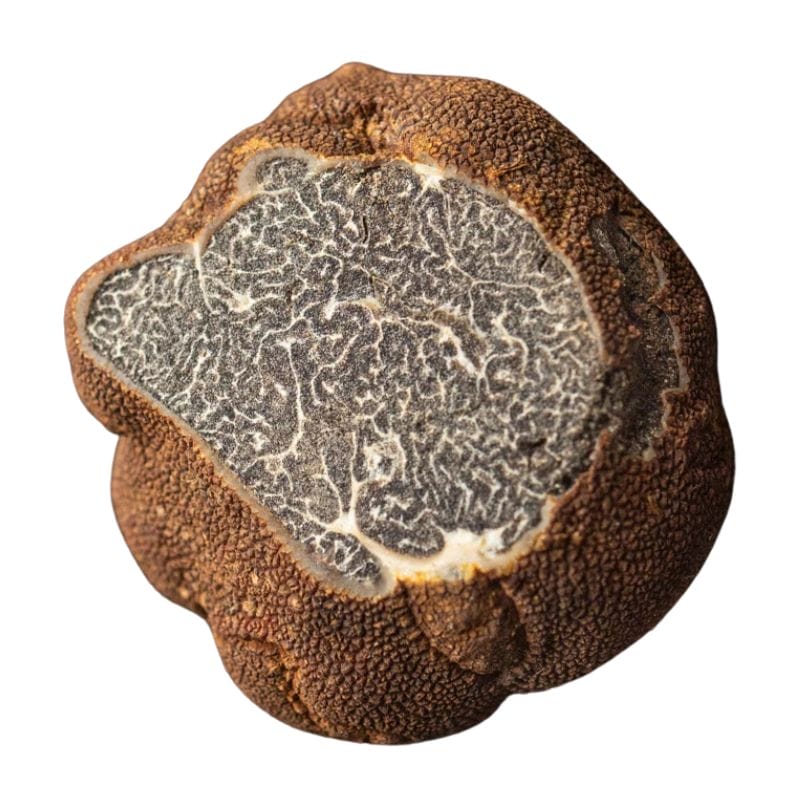
The Appalachian truffle, also known as Tuber canaliculatum, is a native North American truffle that’s slowly getting noticed. It’s about the size of a walnut and has a reddish-brown, bumpy outer surface that looks kind of like a rough, warty potato.
When you cut it open, the inside is firm and dark brown with thin white veins running through it like a marbled pattern. If it’s fully ripe, the smell is strong and earthy—some say it has a kind of nutty, funky aroma that stands out.
You can find these truffles in mixed hardwood forests, especially around oaks and pines, from late summer through fall. They grow underground, so look for spots where the soil is loose and animals like squirrels have been digging—sometimes that’s a good clue.
If you’re foraging, gently raking the top layer of soil near tree roots can help, but a trained dog or even a good nose makes it way easier. Once you know what to look for, the reddish color and bumpy skin are good signs you’ve found the right thing.
Compared to truffles like Tuber oregonense or Leucangium carthusianum, Tuber canaliculatum is more subtle in every way. Its smaller size and lighter scent mean you have to pay closer attention when foraging.
It’s also not as popular in the culinary world because it doesn’t pack the same punch in terms of flavor or aroma. Still, finding one can be rewarding, especially if you’re exploring different types of fungi in the area.
Desert Truffle (Terfezia and Tirmania spp.)
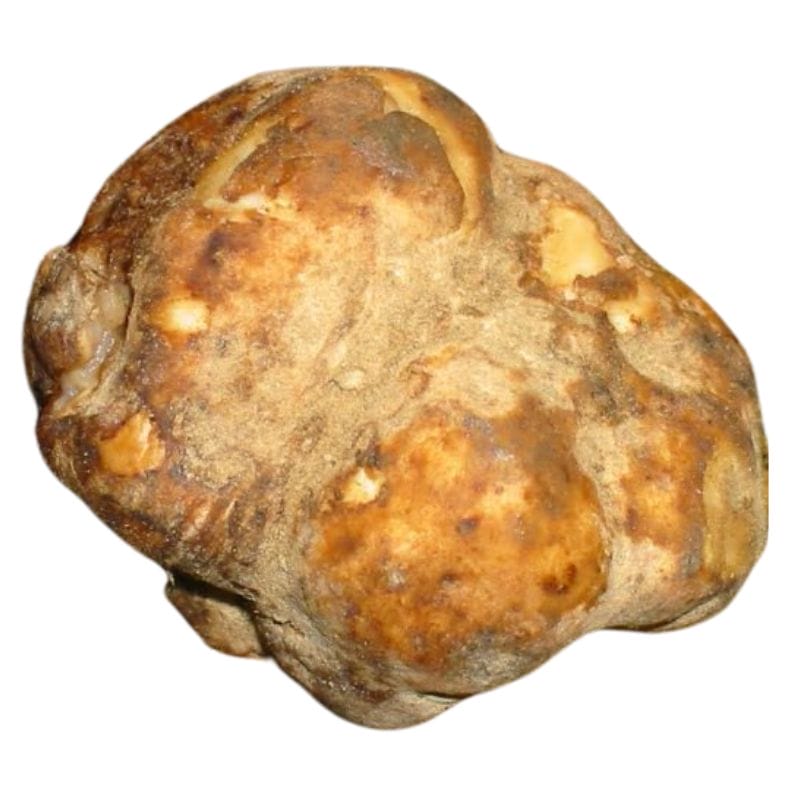
Terfezia and Tirmania are two types of truffles that are sometimes called desert truffles. These are a bit different from the truffles we usually think of, with their bold flavors and rich aromas.
These ones are a little more understated, but they’re fascinating in their own right. What makes them stand out is their ability to thrive in dry, harsh environments where you wouldn’t expect something so delicate to grow.
Unlike the earthy, intense aroma of black or white truffles, Terfezia and Tirmania truffles have a milder scent and flavor. They’re often described as nutty, with a hint of sweetness, but they lack the strong garlicky or musky notes you might associate with other truffles.
Their texture is also different—more firm and less oily than what you’d find with species like Tuber oregonense. They might not have the same culinary punch, but they’re still prized in traditional dishes, where their subtle flavors shine in simpler recipes.
When it comes to appearance, they’re easy to spot once you know what you’re looking for. They’re round to slightly irregular in shape, and their color can range from light beige to a reddish-brown, depending on the species.
The surface is usually smooth or slightly textured, without the rough, knobby look of a black truffle. Cut one open, and you’ll see a pale interior that’s often uniform in color, lacking the intricate veining you’d see in something like Leucangium carthusianum.
Pecan Truffle (Tuber lyonii)

Tuber lyonii, also known as the pecan truffle, is a native North American truffle that grows underground near the roots of pecan trees. You’ll mostly find it in the southeastern U.S., especially in states like Texas, Georgia, and Mississippi.
On the outside, pecan truffles are round to lumpy and have a smooth, light brown skin that darkens as they age. They’re usually about the size of a marble or golf ball, and sometimes they even poke up slightly through the soil surface.
If you slice one open, the inside has a pretty marbled look—light tan streaks mixed with darker brown, almost like wood grain. The smell is earthy, nutty, and kind of warm, especially when they’re fully mature.
When you’re out looking for them, check under mature pecan trees or other hardwoods like oaks and hickories. Trained dogs can help sniff them out, but people sometimes spot them by looking for little cracks in the soil or raised areas near the tree’s base.
Compared to other U.S. truffles like the Oregon white truffle or the Appalachian black truffle, pecan truffles have a milder flavor and are more common in orchards. They’re a solid option in the kitchen—freshly sliced over pasta or mixed into butter—and they don’t come with the high price tag of their European cousins.
Truffle Lookalikes To Avoid
When you’re out hunting you also need to know about a few different fungi species that look very similar to the delicious truffles we’re after but are either inedible or not worth eating. Keep an eye out for:
Pine Truffles (Geopora cooperi)
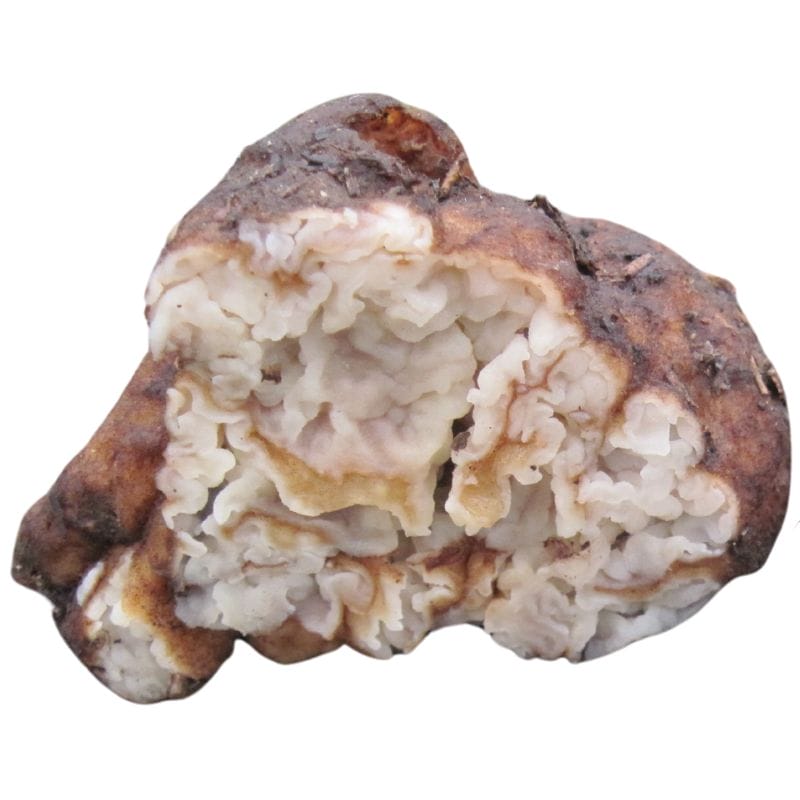
Geopora cooperi is a fungus that can easily confuse someone new to truffle hunting. It’s sometimes called the pine truffle because it grows underground like a true truffle and often pops up near certain trees.
At first glance, it might seem like you’ve hit the jackpot, but this one is a false truffle, not something you’d want to eat or sell.
The easiest way to tell Geopora cooperi apart from real truffles is by looking closely at its structure. While true truffles have a smooth or slightly knobby exterior and a marbled interior, Geopora cooperi has a rougher, more irregular outer surface.
When it matures, it sometimes splits open, revealing a cup-like shape, which true truffles never do. Inside, it’s less dense and doesn’t have the intricate veining that makes real truffles so unique.
Another big difference is the smell. True truffles have a strong, rich aroma that’s earthy, sweet, or garlicky, depending on the species. Geopora cooperi, on the other hand, has a much weaker scent, and it’s not as pleasant or distinctive.
If you’re relying on aroma to identify your find, this one will give itself away pretty quickly. So, while it might look similar at first, a closer inspection will show it’s not the culinary treasure you’re hoping for.
Stinking Slime Truffle (Melanogaster ambiguus)
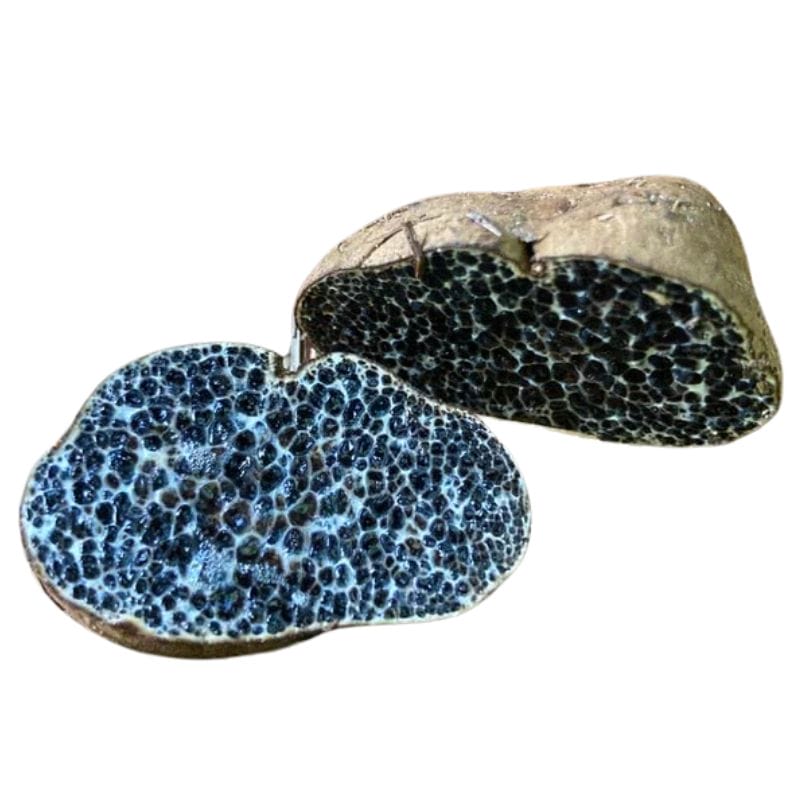
Melanogaster Ambiguus, because of their reddish-brown to dark brown exterior, might look like true truffles at first glance, but they’re quite different when you know what to look for.
The key difference is on the inside. When you cut open Melanogaster ambiguus, the interior is filled with flattened cells that have a shiny black gelatinous feel to them. Real truffles, on the other hand, have those beautiful marbled veins running through their flesh, almost like a web.
Another giveaway is the smell. While real truffles have a rich, earthy aroma that’s mouthwatering, Melanogaster ambiguus tends to have a much stronger, almost unpleasant odor—it’s not something you’d want to sprinkle on your pasta.
Earthballs (Scleroderma)
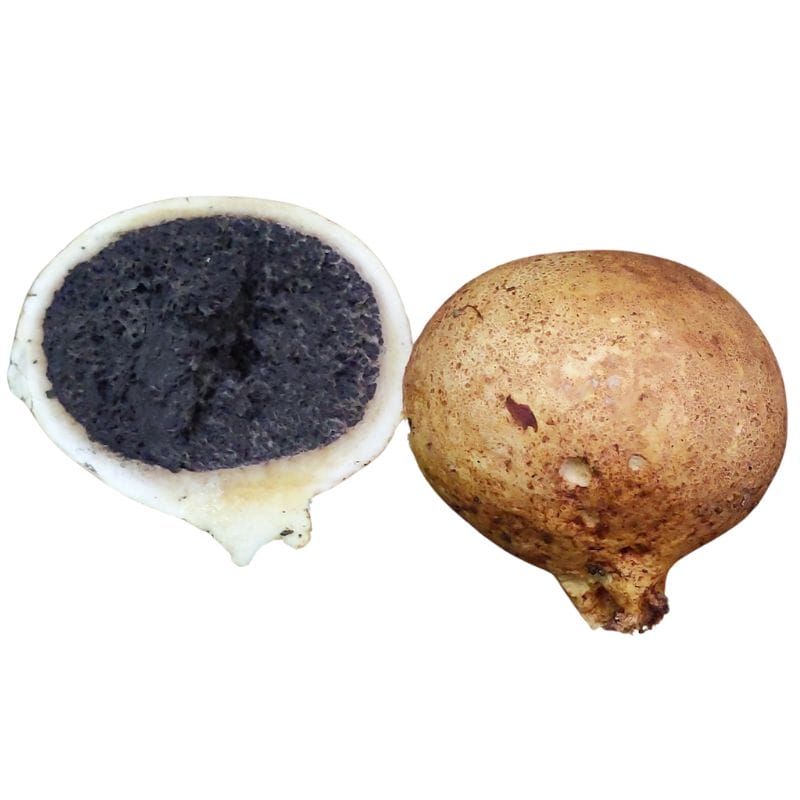
Scleroderma, commonly called earthballs, can easily fool someone who’s just starting out because they grow underground and have a round shape similar to truffles. But don’t be tricked—Scleroderma is not a true truffle, and it’s actually toxic, so it’s important to know how to tell the difference.
The first thing you’ll notice is the outer skin, which is thicker and tougher than that of most truffles. It can range in color from yellowish to dark brown, often with a rough or cracked texture.
If you cut it open, the difference becomes even clearer. While true truffles have a marbled interior with delicate white veins, Scleroderma starts out with a whitish inside that quickly darkens as it matures, turning black or purple with no marbling. It’s dense and solid, almost like charcoal in the later stages.
Another big giveaway is the smell. True truffles have a rich, earthy aroma that makes them so prized, while Scleroderma has little to no pleasant scent—some even describe it as musty or unpleasant.
Deer Truffles (Elaphomyces)
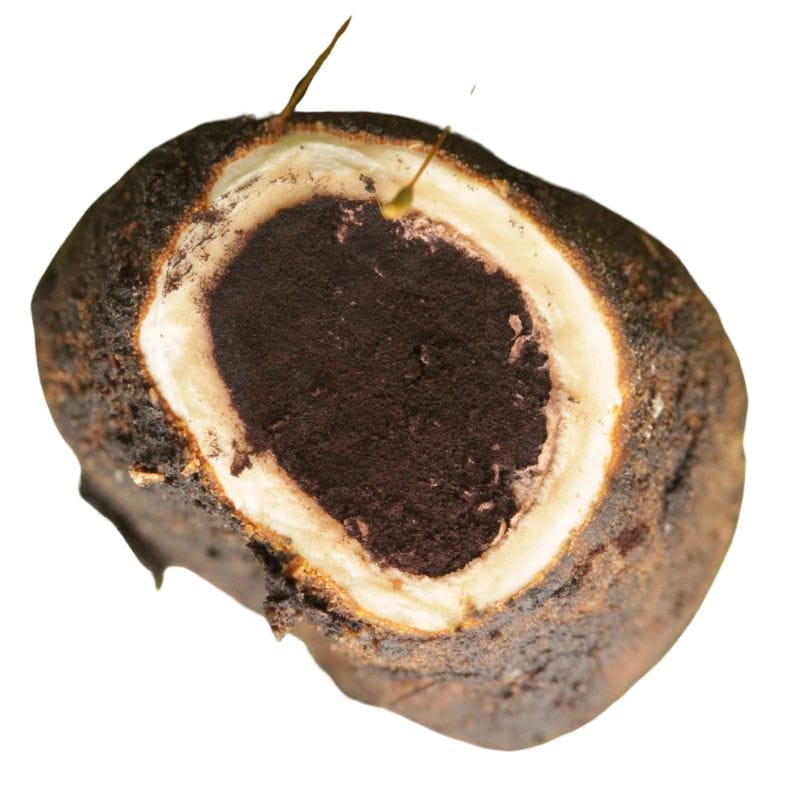
Elaphomyces, also known as deer truffles, look like true truffles at first glance, but they’re a whole different story. They’re called deer truffles because wildlife, especially deer and rodents, love to eat them. For us humans, though, they’re not edible—and definitely not what you want to mistake for a prized truffle.
Here’s how you can tell Elaphomyces apart from the real thing. First, they have a tough, warty outer surface that can range from pale tan to black, depending on the species and their age.
When you cut them open, the inside is solid and sometimes speckled or marbled, but not in the delicate, vein-like pattern you’d see in true truffles.
Their smell is also a big giveaway. Instead of the rich, earthy aroma of an edible truffle, Elaphomyces either has little scent or an odor that’s earthy but not particularly appealing.
Another thing to know is that Elaphomyces often grows deeper in the soil than true truffles, and they tend to have a harder, woodier texture.
Best Practices For Finding Truffles
Truffle hunting can be a rewarding adventure if you know the right tips and tricks. Here’s what you should keep in mind to improve your chances of finding these underground treasures:
Wait 10 to 14 Days After Heavy Rain
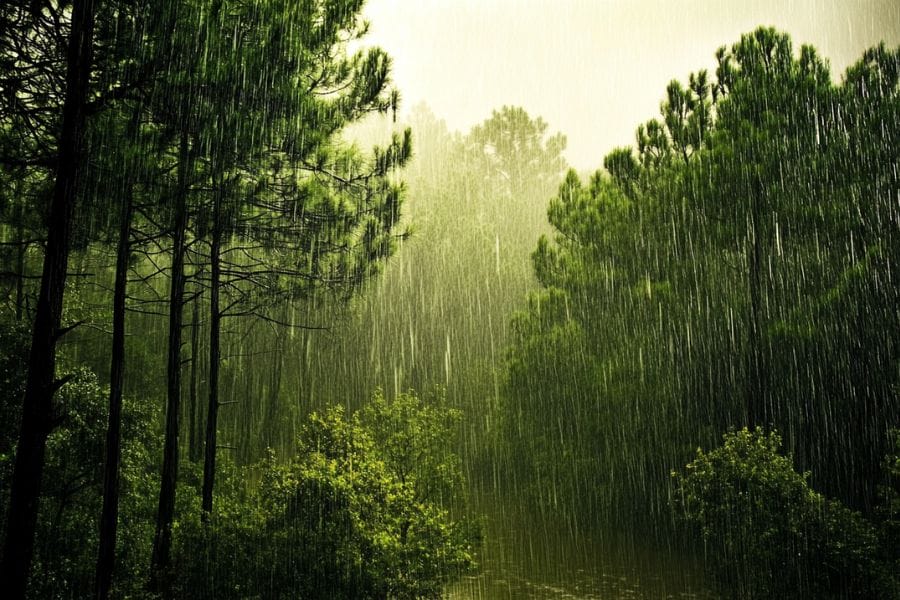
After a heavy rain, it’s best to wait about 10 to 14 days before heading out. This gives the truffles time to mature and release their signature aroma, making it easier for you (and your dog) to sniff them out. Rain helps truffles grow, but they don’t start giving off their scent right away.
As the soil warms up, the truffles get more aromatic, and the ground becomes looser, which makes digging easier without disturbing the environment too much. The timing is perfect to find truffles at their best—both in quality and in how easy they are to locate.
Find the Right Trees
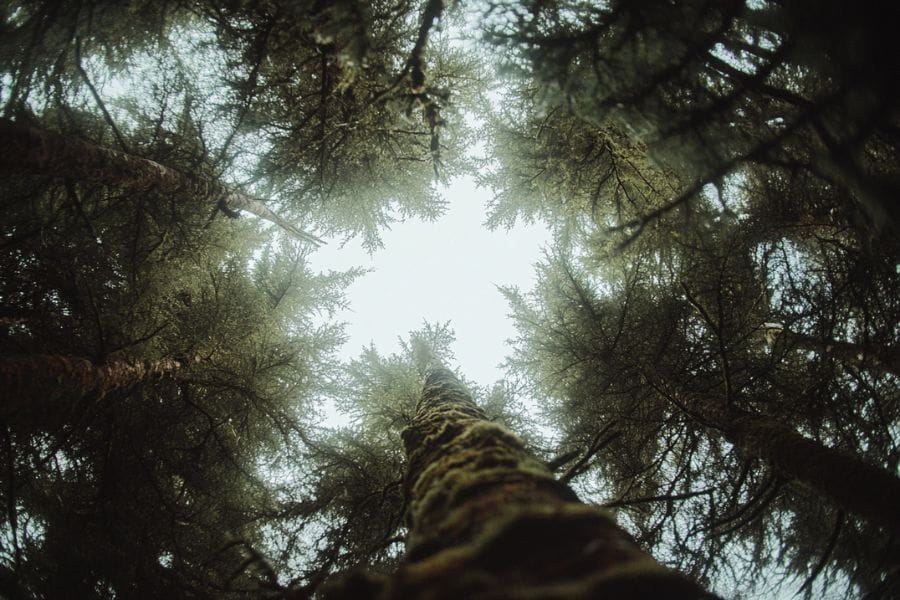
Truffles don’t grow just anywhere—they have a special relationship with certain trees. You won’t find them under just any tree, so knowing which ones to look for can make all the difference. Some of the best trees to look out for are:
- Pines
- Douglas-firs
- Oaks
- Hazelnuts
- Cypresses
- Willows
For example, if you’re looking for Oregon white truffles, keep an eye out for Douglas-fir trees. California black truffles, on the other hand, are often found near oaks and hazelnuts. The soil around these trees also needs to be slightly alkaline, so it helps to know what kind of ground you’re walking on as well.
Watch for Wildlife Activity
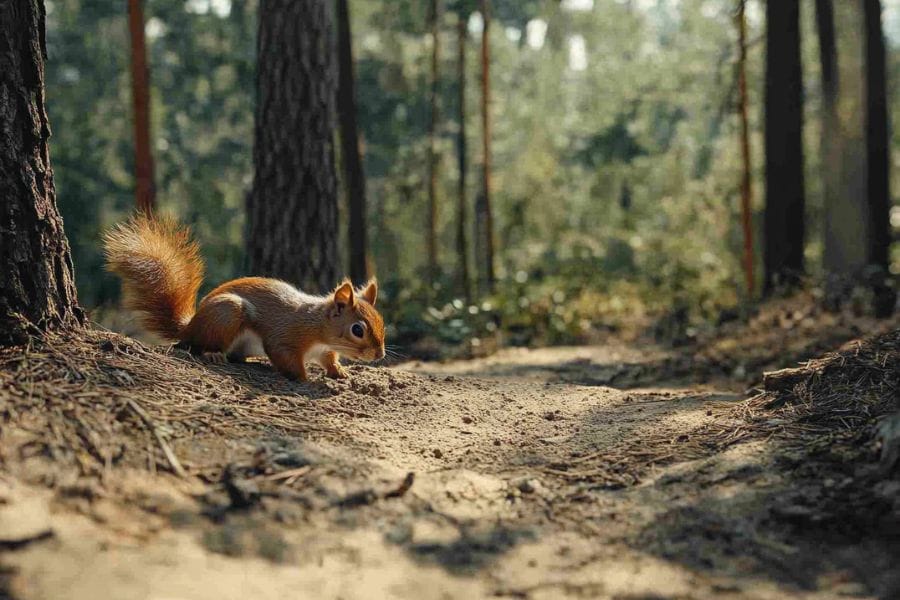
Animals like squirrels and chipmunks often help spread truffle spores, and sometimes their digging can lead you straight to truffles. While you won’t always find truffles in every pit animals dig (they also look for things like acorns or bulbs), fresh digs are a good clue. The more recent the pit, the better chance it has of leading to truffles.
Even though animals are a part of the truffle cycle, most hunters prefer using dogs to find the real treasure underground. Dogs have an incredible nose for truffles and can pinpoint their location much more reliably than any squirrel or chipmunk.
Get a Little Help from a Truffle-Hunting Dog
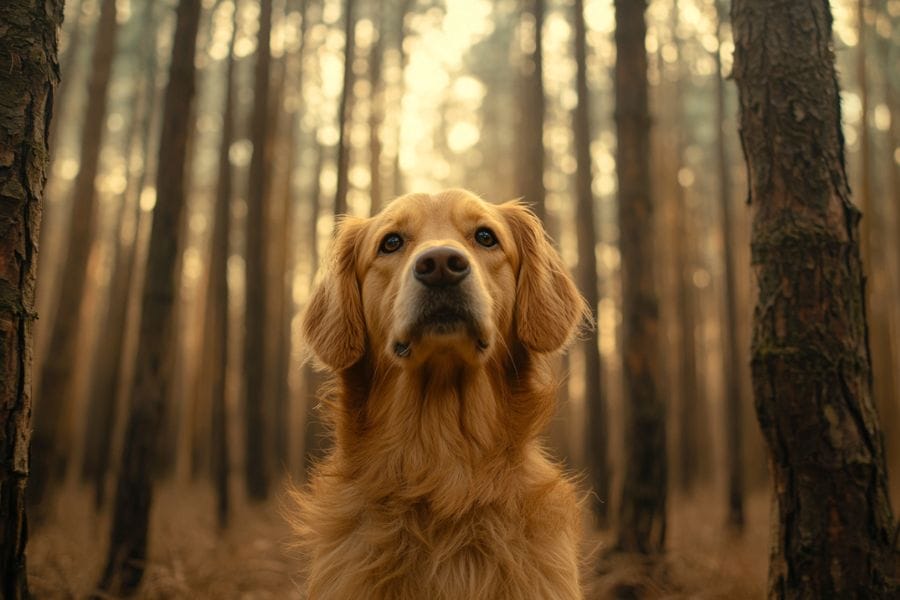
If you’re serious about truffle hunting, a trained dog can make your life a whole lot easier. Their sense of smell is extraordinary, and they’re trained to find mature truffles buried beneath the surface. Many truffle hunters swear by their dogs, and for good reason—they’re much more accurate than humans when it comes to sniffing out truffles.
If you don’t already have a trained dog, you can connect with local foraging groups or specialized trainers who offer truffle-hunting services. Some places even host events where you can see experienced handlers with their dogs in action. And if you’re feeling adventurous, you can train your own dog using truffle-scent kits and practice in a controlled space before hitting the woods.
Before you head out
Before embarking on any foraging activities, it is essential to understand and follow local laws and guidelines. Always confirm that you have permission to access any land and obtain permission from landowners if you are foraging on private property. Trespassing or foraging without permission is illegal and disrespectful.
For public lands, familiarize yourself with the foraging regulations, as some areas may restrict or prohibit the collection of mushrooms or other wild foods. These regulations and laws are frequently changing so always verify them before heading out to hunt. What we have listed below may be out of date and inaccurate as a result.
Where You Can Find Truffles Around The State
Now we’re going to go over five of the best locations for finding truffles. We’ll go a bit in-depth here and then provide a much longer list of other spots to try.
George Washington National Forest
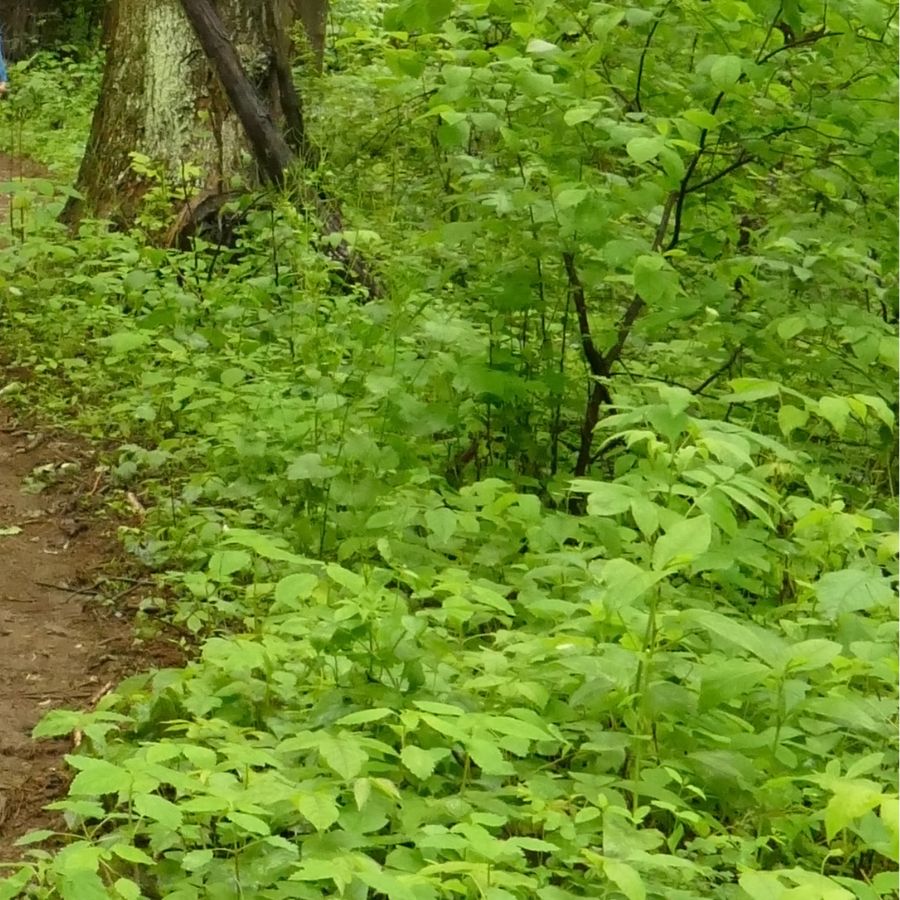
The George Washington National Forest spans across multiple states, with a significant portion located in western Virginia. This massive forest ecosystem covers over 1.8 million acres and provides diverse habitats perfect for truffle hunting.
The mountainous terrain creates microclimates that truffles love. Different elevations mean varying soil temperatures and moisture levels throughout the year.
For the best truffle-hunting experience, focus on areas near Staunton where oak trees are at least 10 years old. Look for spots where the soil appears slightly disturbed or has small cracks.
Shenandoah National Park
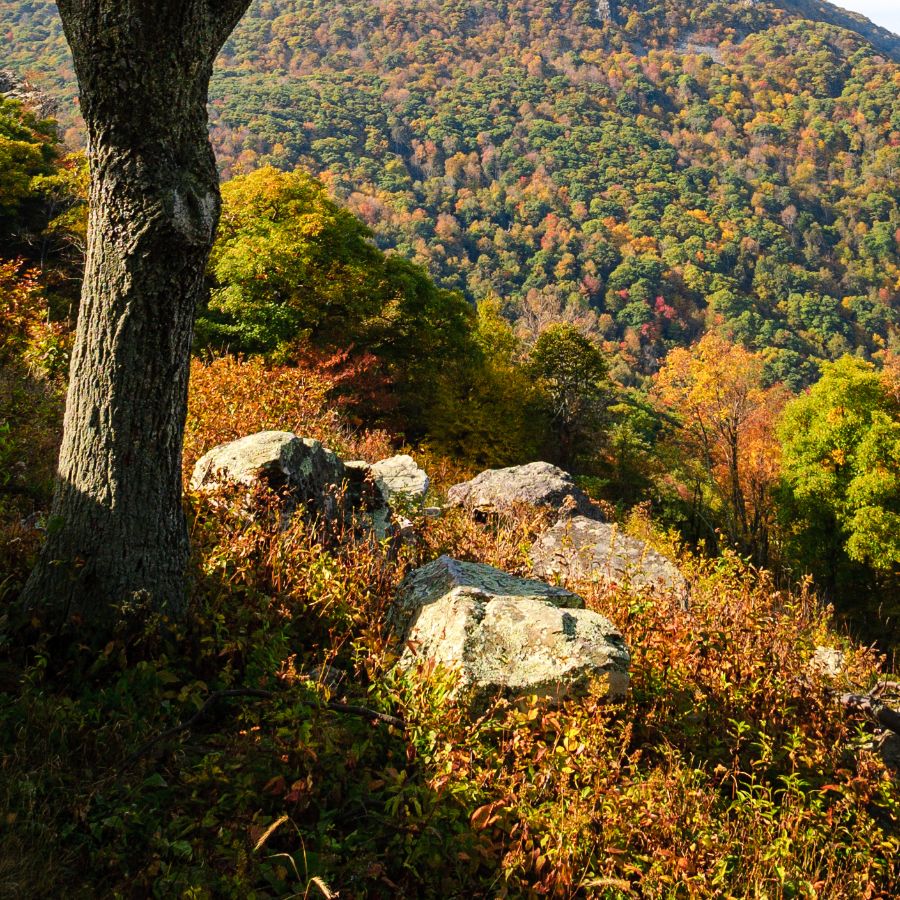
Shenandoah National Park stretches along Blue Ridge Mountains and offers incredible biodiversity across its 200,000 acres. This protected area features dense hardwood forests that have remained largely undisturbed.
Ancient granite and greenstone formations provide excellent drainage while retaining enough moisture. Multiple creek systems flow through the park, creating the humidity levels truffles need.
Search near hiking trails where beech and chestnut oak trees dominate the landscape. Pay special attention to areas where leaves collect naturally in small depressions.
Jefferson National Forest
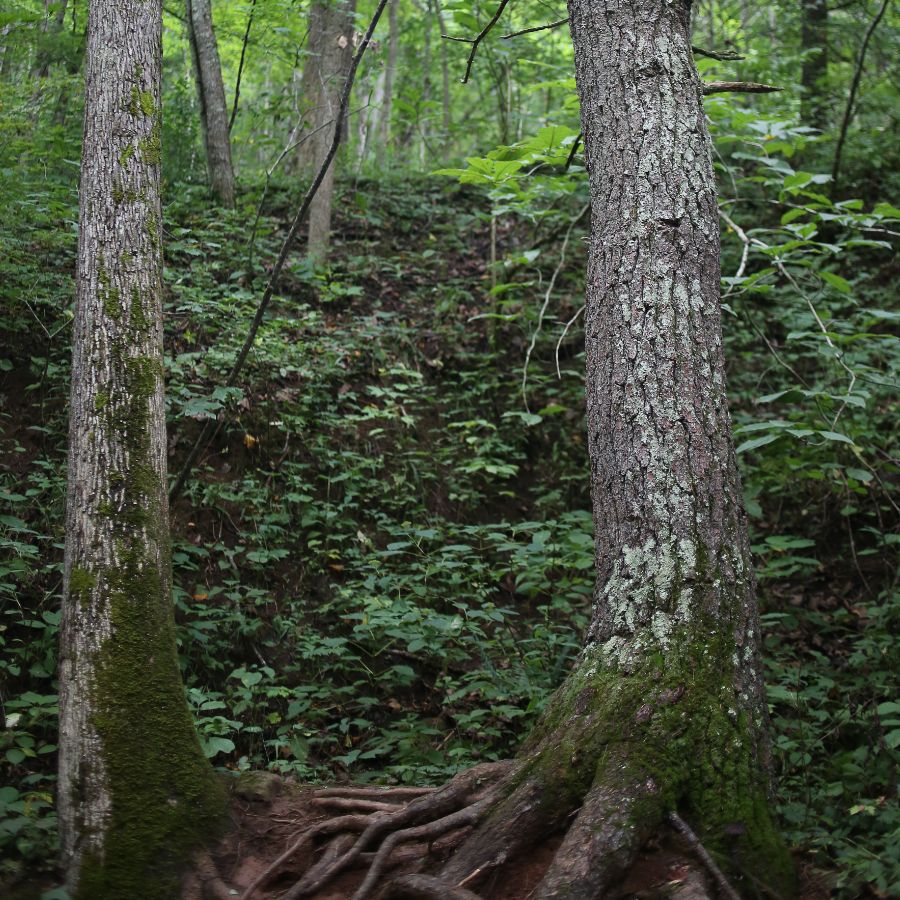
Jefferson National Forest covers nearly 2 million acres across Virginia, West Virginia, and Kentucky. The Virginia sections offer some of the most pristine truffle hunting opportunities available.
This forest is famous for its incredibly diverse tree species. Over 100 different types of trees grow throughout the forest, including many that form symbiotic relationships with truffles.
Target areas around Blacksburg where tulip poplar trees grow alongside white oaks. These mixed tree zones often produce the highest truffle yields for hunters.
Blue Ridge Parkway Corridor
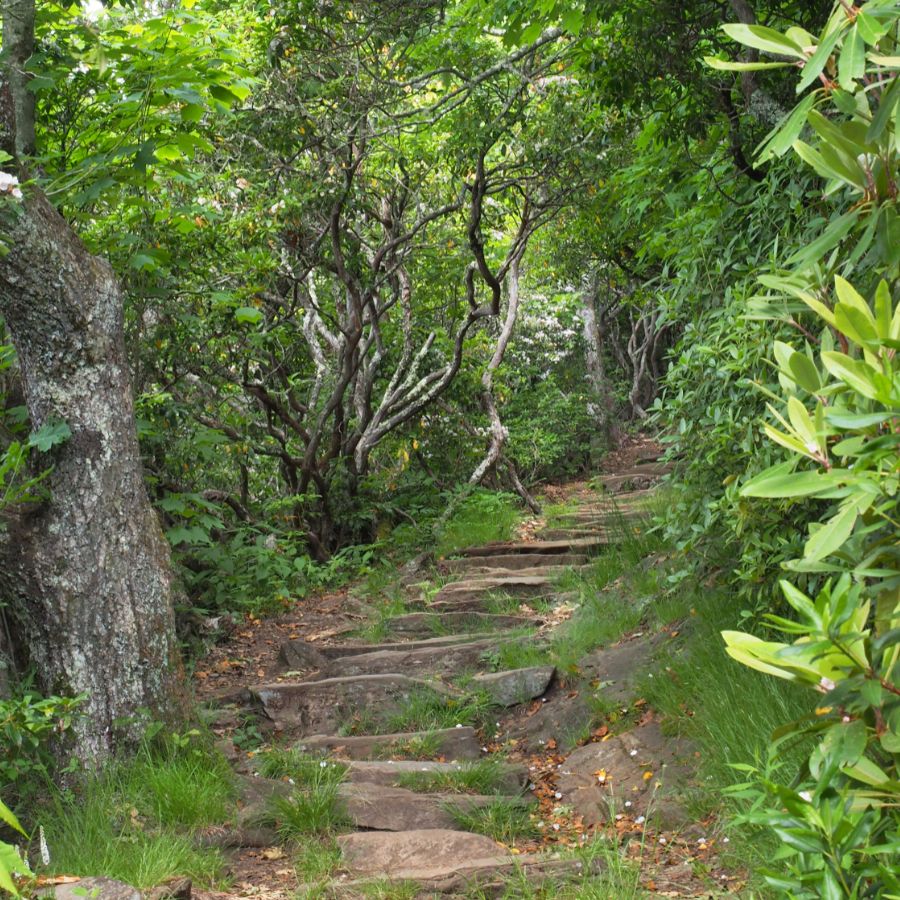
The Blue Ridge Parkway stretches 469 miles through Virginia and North Carolina, creating a protected corridor of diverse ecosystems. This scenic route passes through numerous state and federal lands where truffle collection is permitted.
The corridor protects some of Virginia’s most ancient forest communities. Some tree groves along the parkway are over 200 years old, providing well-established root systems.
Focus your search efforts around Waynesboro, where American chestnut trees once dominated before disease struck. Search in areas where new growth has emerged from old root systems.
Monongahela National Forest
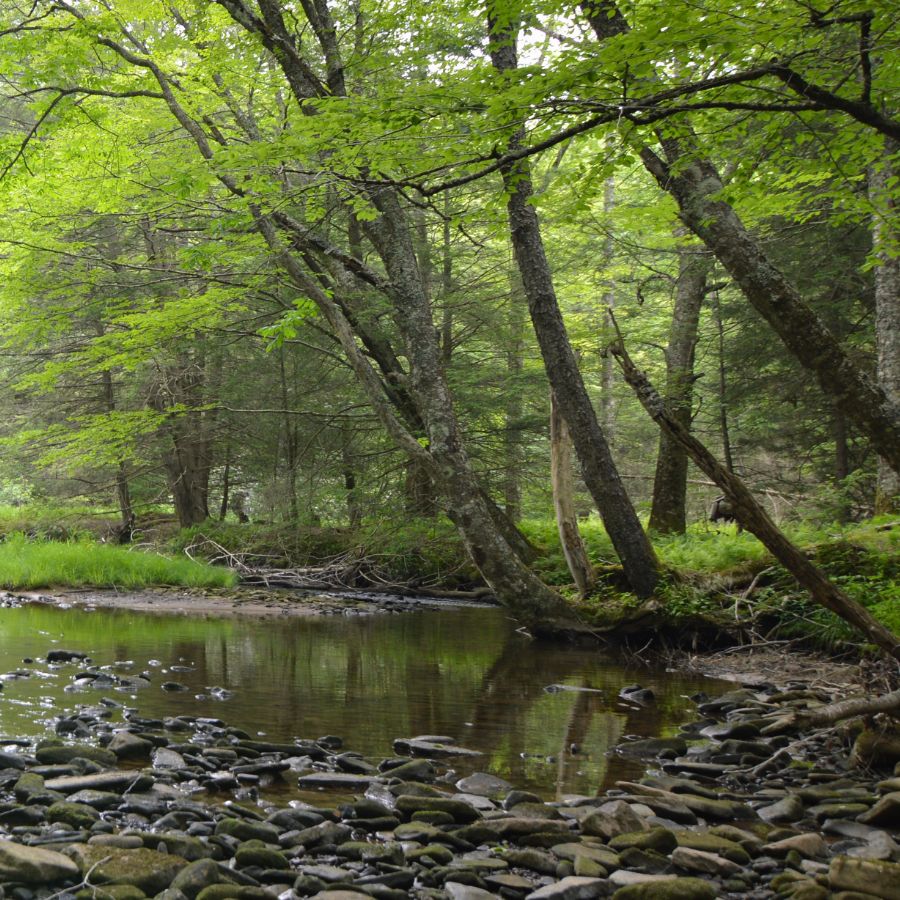
The Monongahela National Forest extends into eastern Virginia, offering over 900,000 acres of mountainous terrain. The forest’s Virginia portions feature some of the state’s highest elevations and most diverse ecosystems.
High elevation areas experience significant temperature fluctuations between day and night. These temperature swings actually benefit truffle development by creating natural stress.
Concentrate your efforts around areas where red maple and basswood trees grow together in mixed stands. Search near natural springs where constant moisture keeps soil temperatures more stable.
Other Great Locations For Truffles
Central Virginia
| Location | Collection Guidelines |
|---|---|
| Bear Garden WMA | Truffle collection permitted for personal use with a valid WMA access permit. |
| Briery Creek WMA | Personal truffle foraging allowed with appropriate permit. |
| Cumberland State Forest | Truffle harvesting allowed for personal use; no commercial collection. |
| Featherfin WMA | Personal truffle collection permitted with WMA access permit. |
| James River WMA | Truffle foraging allowed for personal use with proper permit. |
| Powhatan WMA | Personal truffle collection permitted with WMA access permit. |
| Prince Edward-Gallion State Forest | Truffle harvesting allowed for personal use; no commercial collection. |
| Sandy Point State Forest | Personal truffle foraging allowed with appropriate permit. |
| Twin Lakes State Park | Truffle collection permitted for personal use; no commercial harvesting. |
| Virginia Truffles (Rixeyville) | Guided truffle hunts available by appointment; collection during hunts only. |
Northern Virginia
| Location | Collection Guidelines |
|---|---|
| Banshee Reeks Nature Preserve | Truffle foraging allowed for personal use; no commercial collection. |
| Bull Run Mountains Natural Area Preserve | Personal truffle collection permitted in designated areas. |
| Conway Robinson State Forest | Truffle harvesting allowed for personal use; no commercial collection. |
| G. Richard Thompson WMA | Personal truffle collection permitted with WMA access permit. |
| Leesylvania State Park | Truffle foraging allowed for personal use; no commercial collection. |
| Occoquan Bay National Wildlife Refuge | Personal truffle collection permitted in designated areas. |
| Prince William Forest Park | Truffle harvesting allowed for personal use; no commercial collection. |
| Sky Meadows State Park | Personal truffle collection permitted in designated areas. |
| Thompson WMA | Truffle foraging allowed for personal use with appropriate permit. |
Shenandoah Valley
| Location | Collection Guidelines |
|---|---|
| Augusta Springs WMA | Personal truffle collection permitted with WMA access permit. |
| Big Levels WMA | Truffle foraging allowed for personal use with appropriate permit. |
| Goshen-Little North Mountain WMA | Personal truffle collection permitted with WMA access permit. |
| Highland WMA | Truffle harvesting allowed for personal use; no commercial collection. |
| Little North Mountain WMA | Personal truffle collection permitted with WMA access permit. |
| Shenandoah River State Park | Truffle foraging allowed for personal use; no commercial collection. |
Southwest Virginia
| Location | Collection Guidelines |
|---|---|
| Big Survey WMA | Personal truffle collection permitted with WMA access permit. |
| Clinch Mountain WMA | Truffle foraging allowed for personal use with appropriate permit. |
| Hidden Valley WMA | Personal truffle collection permitted with WMA access permit. |
| Laurel Bed Lake WMA | Truffle harvesting allowed for personal use; no commercial collection. |
| Mount Rogers National Recreation Area | Personal truffle collection permitted in designated areas. |
| North Fork of Pound WMA | Truffle foraging allowed for personal use with appropriate permit. |
Southeast Virginia
| Location | Collection Guidelines |
|---|---|
| Big Woods WMA | Personal truffle collection permitted with WMA access permit. |
| Cavalier WMA | Truffle foraging allowed for personal use with appropriate permit. |
| Chippokes Plantation State Park | Truffle harvesting allowed for personal use; no commercial collection. |
| Great Dismal Swamp WMA | Personal truffle collection permitted in designated areas. |
| Hog Island WMA | Truffle foraging allowed for personal use with appropriate permit. |
| Lake Drummond WMA | Personal truffle collection permitted with WMA access permit. |
Eastern Shore
| Location | Collection Guidelines |
|---|---|
| Cape Charles Natural Area Preserve | Truffle harvesting allowed for personal use; no commercial collection. |
| Kiptopeke State Park | Personal truffle collection permitted in designated areas. |
| Savage Neck Dunes Natural Area Preserve | Truffle foraging allowed for personal use; no commercial collection. |
Southside Virginia
| Location | Collection Guidelines |
|---|---|
| Horsepen Lake WMA | Truffle foraging allowed for personal use with appropriate permit. |
| Occoneechee State Park | Truffle harvesting allowed for personal use; no commercial collection. |
| Staunton River State Park | Personal truffle collection permitted in designated areas. |
Blue Ridge Highlands
| Location | Collection Guidelines |
|---|---|
| Grayson Highlands State Park | Truffle foraging allowed for personal use; no commercial collection. |
| Hungry Mother State Park | Personal truffle collection permitted in designated areas. |
| New River Trail State Park | Truffle harvesting allowed for personal use; no commercial collection. |
Piedmont Region
| Location | Collection Guidelines |
|---|---|
| Appomattox-Buckingham State Forest | Personal truffle collection permitted with WMA access permit. |
| Holliday Lake State Park | Truffle harvesting allowed for personal use; no commercial collection. |
When The Best Time Of The Year Is To Find Truffles
The optimal truffle hunting season in Virginia runs from late fall through early spring, typically October through March. Cool temperatures and increased moisture during these months create perfect conditions for truffle development. Most Virginia truffle species reach maturity during winter months when trees are dormant.
Late November and December offer the best opportunities for beginners. Fallen leaves make it easier to spot ground disturbances that indicate truffle presence below.
Avoid hunting during hot summer months when truffles are typically dormant. Weather patterns significantly effect truffle availability each year. Wet autumns followed by mild winters typically produce the largest harvests for dedicated hunters.
One Final Disclaimer
The information provided in this article is for general informational and educational purposes only. Foraging for wild plants and mushrooms involves inherent risks. Some wild plants and mushrooms are toxic and can be easily mistaken for edible varieties.
Before ingesting anything, it should be identified with 100% certainty as edible by someone qualified and experienced in mushroom and plant identification, such as a professional mycologist or an expert forager. Misidentification can lead to serious illness or death.
All mushrooms and plants have the potential to cause severe adverse reactions in certain individuals, even death. If you are consuming foraged items, it is crucial to cook them thoroughly and properly and only eat a small portion to test for personal tolerance. Some people may have allergies or sensitivities to specific mushrooms and plants, even if they are considered safe for others.
Foraged items should always be fully cooked with proper instructions to ensure they are safe to eat. Many wild mushrooms and plants contain toxins and compounds that can be harmful if ingested.

